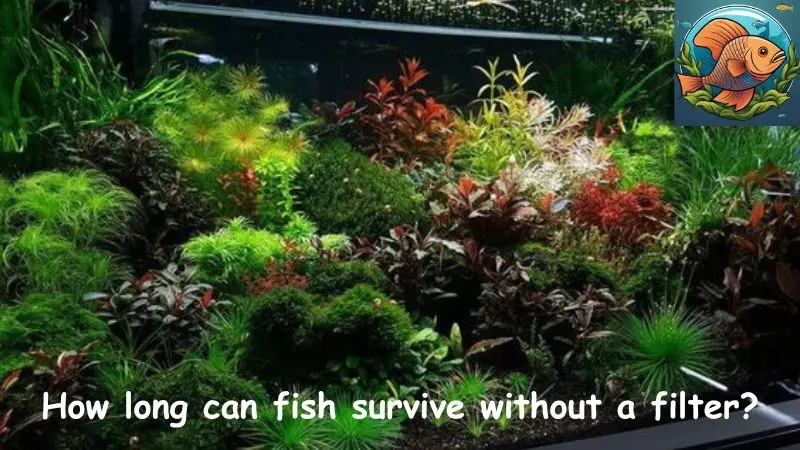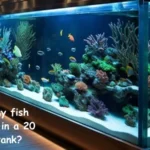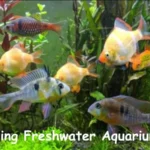fish farming
How long can fish survive without a filter?
The aquatic world, a realm teeming with life, is a delicate ecosystem where every element plays a crucial role in maintaining balance. One of the most critical factors for the well-being of fish, particularly in the confines of an aquarium, is water filtration.
A filter acts as the lungs of the aquarium, ensuring that the water remains clean and oxygenated, a vital condition for the survival of its inhabitants. However, circumstances can arise where a filter malfunctions, is absent, or is temporarily removed for cleaning. This raises a critical question: How long can fish survive without a filter?
The answer to this question is not straightforward and depends on a multitude of factors, including the type of fish, the size of the aquarium, the water parameters, and the presence of other factors that can contribute to water quality deterioration.
Understanding these factors is crucial for fish keepers to make informed decisions about their aquariums, ensuring the health and well-being of their aquatic companions. Let’s explore this issue further with fishtankmagic.com in the article below!
How Long can Fish Survive Without a Filter? The Importance of Filtration in Aquariums
Aquariums, while seemingly self-contained ecosystems, require careful management to maintain a healthy environment for their inhabitants. Fish, like all living organisms, produce waste products, including ammonia, nitrite, and nitrate, which are toxic in high concentrations. These waste products accumulate in the water, creating an environment that is detrimental to fish health. Filtration plays a vital role in removing these harmful substances, ensuring the water remains clean and suitable for fish survival.
Types of Aquarium Filters
Aquarium filters come in various types, each designed to address specific needs and cater to different aquarium setups. The most common types include:
- Hang-on Back (HOB) Filters: These filters are typically attached to the back of the aquarium and are suitable for smaller tanks. They contain a mechanical filter media, such as sponge or filter floss, to trap debris, and a biological filter media, such as ceramic rings or bio-balls, to house beneficial bacteria that break down ammonia and nitrite.
- Undergravel Filters: These filters are placed beneath the substrate and utilize the gravel as a filter medium. Water is drawn through the gravel by a pump, and the gravel acts as a biological filter, hosting beneficial bacteria. However, undergravel filters are often considered less effective than other types and can be difficult to clean.
- Canister Filters: These filters are external units that are connected to the aquarium via hoses. They typically contain multiple filter stages, including mechanical, chemical, and biological filtration, offering a high level of water purification. Canister filters are suitable for larger aquariums and are generally considered the most effective type of filter.
- Sponge Filters: These filters are simple and effective, using a sponge as the filter medium. They are often used in breeding tanks and smaller aquariums. Sponge filters are relatively inexpensive and require minimal maintenance.
- Power Filters: These filters are similar to HOB filters but are typically more powerful and have a larger filter capacity. They are suitable for larger aquariums and offer a high level of filtration.
The Impact of Filter Failure on Water Quality
When a filter malfunctions or is absent, the water quality in an aquarium deteriorates rapidly. The absence of filtration allows waste products to accumulate, leading to a buildup of ammonia, nitrite, and nitrate. These substances are toxic to fish and can cause a range of health problems, including:
- Ammonia Toxicity: Ammonia is a highly toxic compound that can damage fish gills and lead to respiratory distress. High ammonia levels can also suppress the immune system, making fish more susceptible to disease.
- Nitrite Toxicity: Nitrite is another toxic compound that can interfere with the ability of fish to transport oxygen in their blood. This can lead to a condition known as “brown blood disease,” where the blood becomes brown due to the presence of methemoglobin.
- Nitrate Toxicity: While nitrate is less toxic than ammonia and nitrite, high levels can still be harmful to fish. Nitrate can inhibit growth and reduce the lifespan of fish.
Factors Influencing Fish Survival Without a Filter
The length of time that fish can survive without a filter depends on several factors, including:
- Fish Species: Different fish species have varying tolerances to poor water quality. Some fish, such as goldfish, are more tolerant of ammonia and nitrite than other species, such as discus or angelfish.
- Aquarium Size: A smaller aquarium will experience a more rapid deterioration in water quality than a larger aquarium. This is because there is less water volume to dilute the waste products.
- Water Parameters: The initial water parameters, such as pH, hardness, and temperature, can influence the rate at which water quality deteriorates. Water that is already close to the ideal parameters for the fish species will be more resistant to changes in water quality.
- Bioload: The bioload refers to the amount of waste produced by the fish and other organisms in the aquarium. A higher bioload will lead to a faster accumulation of waste products.
- Presence of Other Organisms: The presence of other organisms, such as plants and invertebrates, can contribute to the deterioration of water quality. Plants can consume nutrients, but they can also release organic waste products.
Signs of Poor Water Quality
Fish keepers should be vigilant in monitoring their aquariums for signs of poor water quality. Some common signs include:
- Fish exhibiting unusual behavior: Fish may become lethargic, lose their appetite, or exhibit erratic swimming patterns.
- Cloudy water: Cloudy water indicates the presence of suspended particles, which can be a sign of high levels of waste products.
- Algae growth: Excessive algae growth can be a sign of high nutrient levels in the water, indicating poor water quality.
- Fish gasping for air at the surface: This is a sign of low oxygen levels in the water, which can be caused by poor filtration.
- Fish developing sores or lesions: This can be a sign of ammonia or nitrite poisoning.
How to Manage a Filter Failure
If a filter fails, it is crucial to take immediate action to prevent the deterioration of water quality and protect the fish. Here are some steps that can be taken:
- Identify the cause of the filter failure: Determine if the filter is simply clogged or if there is a more serious problem.
- Clean or replace the filter: If the filter is clogged, clean it thoroughly and replace any worn-out filter media. If the filter is damaged, replace it with a new one.
- Perform a partial water change: Remove a portion of the aquarium water and replace it with fresh, dechlorinated water. This will help to dilute the waste products and improve water quality.
- Add a temporary filter: If a new filter is not immediately available, a temporary filter can be used to provide some level of filtration. A simple sponge filter or a DIY filter made from a plastic bottle and filter floss can be effective.
- Monitor water parameters: Use a test kit to monitor ammonia, nitrite, and nitrate levels in the water. Perform water changes as needed to maintain safe levels.
- Consider using a water conditioner: Water conditioners can help to neutralize chlorine and other harmful substances in tap water.
Preventing Filter Failure
To prevent filter failure and maintain optimal water quality, it is important to follow these guidelines:
- Regularly clean and maintain the filter: Clean the filter media according to the manufacturer’s instructions. This will prevent the filter from becoming clogged and ensure that it continues to function properly.
- Use high-quality filter media: Choose filter media that is specifically designed for aquarium use. This will ensure that the filter media is effective in removing waste products and maintaining water quality.
- Avoid overstocking the aquarium: Overstocking can lead to a high bioload, which can overwhelm the filter and lead to poor water quality.
- Monitor water parameters regularly: Use a test kit to monitor ammonia, nitrite, and nitrate levels in the water. This will allow you to identify any problems early and take corrective action.
Conclusion
The question of how long fish can survive without a filter is a complex one, with no definitive answer. The survival time depends on a multitude of factors, including the type of fish, the size of the aquarium, the water parameters, and the presence of other factors that can contribute to water quality deterioration.
However, it is clear that filtration is essential for maintaining a healthy aquarium environment. By understanding the importance of filtration and taking steps to prevent filter failure, fish keepers can ensure the well-being of their aquatic companions. Regular maintenance, careful monitoring of water parameters, and prompt action in case of filter failure are crucial for creating a thriving and sustainable aquarium ecosystem.












